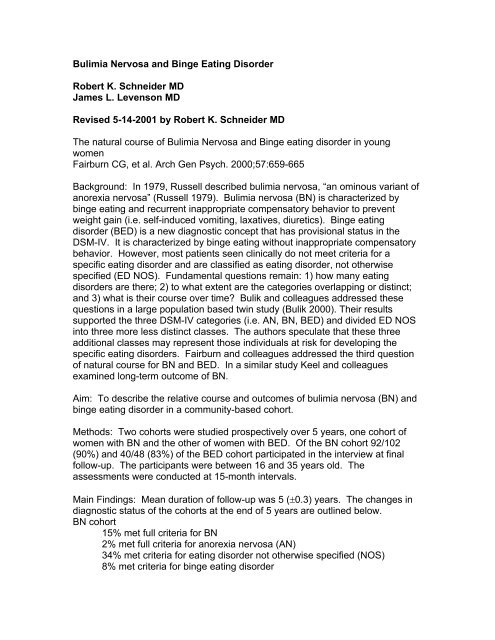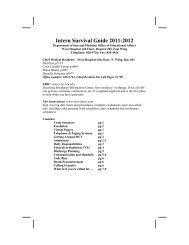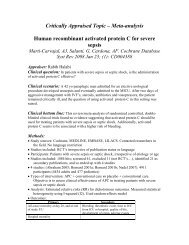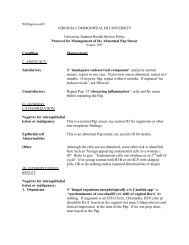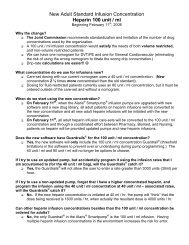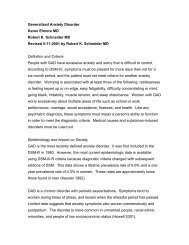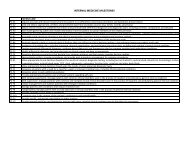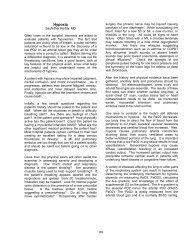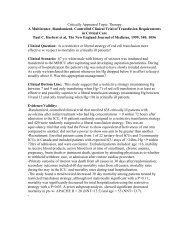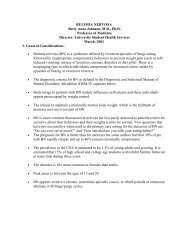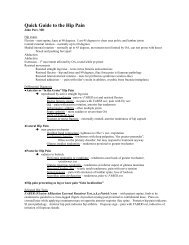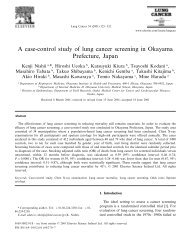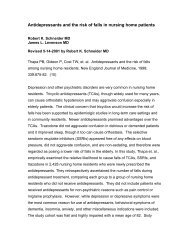POEM: Bulimia Nervosa and Binge Eating Disorder
POEM: Bulimia Nervosa and Binge Eating Disorder
POEM: Bulimia Nervosa and Binge Eating Disorder
Create successful ePaper yourself
Turn your PDF publications into a flip-book with our unique Google optimized e-Paper software.
41% were in full or partial remission.40% received treatment by the end of follow-up<strong>Binge</strong> <strong>Eating</strong> <strong>Disorder</strong>3% met full criteria for BN0% met full criteria for anorexia nervosa (AN)15% met criteria for eating disorder not otherwise specified (NOS)10% met criteria for binge eating disorder72% were in full or partial remission8% received treatment by the end of follow-upConclusions: <strong>Bulimia</strong> nervosa <strong>and</strong> binge eating disorder have different courses<strong>and</strong> outcomes over 5 year follow-up courses. When BN <strong>and</strong> binge eatingdisorder are compared, the prognosis of binge eating disorder was relativelyfavorable, with the great majority making a full recovery despite not havingtreatment; Most improvement occurred in the first 15 months with gradualimprovement thereafter. There was little movement between the two diagnosticcategories supporting these categories as distinct. These observations validatebinge eating disorder as a diagnostic conceptLimitations: This study only assessed behavior at 15-month intervals leavinggaps of time where symptoms may have been present. It is also difficult toestimate the impact of the study assessments on the individual’s course.Impact on Internal Medicine: Most women with eating disorder are notdiagnosed <strong>and</strong> even fewer are treated. This is in part because of the secrecy<strong>and</strong> shame associated with eating disorders. Clinicians must be aware of thesedisorders <strong>and</strong> then actively screen <strong>and</strong> discuss with patients to recognize <strong>and</strong>treat these disorders.Related Articles:<strong>Bulimia</strong> nervosa: an ominous variant of anorexia nervosa.Russell GFM. Psychol Med. 1979;9:429-448.An empirical study of the classification of eating disordersBulik CM, et al. Am J Psych 2000; 157:886-895.3) Long-term Outcome of <strong>Bulimia</strong> <strong>Nervosa</strong>Keel PK, et al. Arch Gen Psych 1999;56:63-69The available long-term outcome data regarding eating disorders is small. Priorto Keel <strong>and</strong> colleagues study, there is only one 10-year study of 44 women (4).In Keel study two clinical cohorts of women with bulimia nervosa werereassessed at 11.5 (±1.9) years. The aim was to find predictive factors <strong>and</strong>describe long-term outcome of women with bulimia nervosa (BN). Surprisingly,age of onset, severity of symptoms <strong>and</strong> 3 broad categories of Axis I diagnoses(anxiety, mood <strong>and</strong> impulse control disorders) were not related to overall
outcome. However, duration of symptoms at baseline was significantlyassociated with outcome (P
procedures” <strong>and</strong> “behavioral experiments” are used to identify <strong>and</strong> correctmaladaptive thoughts. The third phase is concerned with maintenance of change<strong>and</strong> relapse prevention.**Interpersonal Psychotherapy:It does not focus on eating habits, attitudes toward body image or shape. RatherIPT focuses on achieving change in interpersonal relationships. In the treatmentof BN it can be roughly divided into 3 phases. In the first phase a detailedanalysis is made of the interpersonal context within which the eating disorderarose <strong>and</strong> was maintained, leading to a formulation of an interpersonal problemarea(s). The second phase focuses on making changes in the problem areas.The third phase reviews progress <strong>and</strong> consolidates gains that may be used infuture problems.


